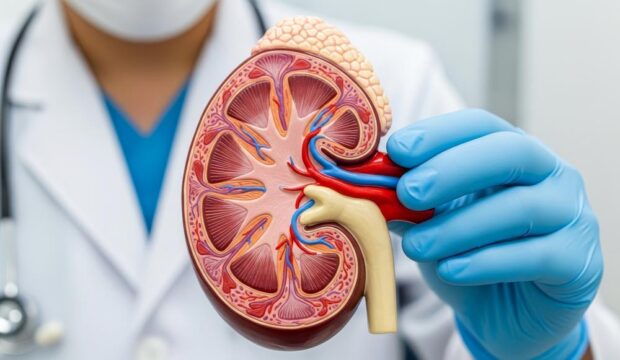Advertisment
Mortality risk rises with fatty liver disease

Results from a large, retrospective Swedish study indicate that people with fatty liver disease have almost twice the risk of death in a 5-7 year period when compared to the general population.
“Many people are not aware that they have fatty liver disease because it rarely causes any symptoms in the earlier stages,” said Axel Wester, MD, assistant professor at the Department of Medicine, Huddinge, Karolinska Institutet and physician at Karolinska University Hospital in Stockholm. “Our study shows that people diagnosed with MASLD have an increased risk of dying from many different diseases, not just liver disease.”
In this retrospective and population-based study, the investigators identified MASLD-diagnosed subjects in inpatient or specialized outpatient care using Swedish healthcare registers from 2002-2020 (n=13,099).
They matched each of these subjects with as many as 10 control subjects (without MASLD) from the general population (n=118,884). They used standard statistical tools to evaluate the data for mortality risk in each group, adjusting for other health factors.
They reported that 1,628 (12.4%) deaths occurred among the subjects with MASLD and 9,119 (7.7%) among the control subjects during a median follow-up of 4.7 and 5.8 years respectively.
MASLD was associated with a doubling of all-cause mortality (198%) and with higher rates of all causes of death except mental health disorder.
The association was especially high for liver disease-related mortality (27 times higher mortality rate) and liver cancer (35 times higher mortality rate).
A sub-analysis of the data showed that the highest estimated 15-year cumulative incidence of death in subjects with MASLD was for non-HCC cancer (7.3%) and cardiovascular disease (7.2%).
The authors concluded. “MASLD was strongly associated with liver- and HCC-related mortality, but the absolute risks of death were highest for non-HCC cancer and cardiovascular disease. Mortality was increased for nearly all causes in patients with MASLD, suggesting that earlier multidisciplinary care is needed to reduce excess mortality.”





